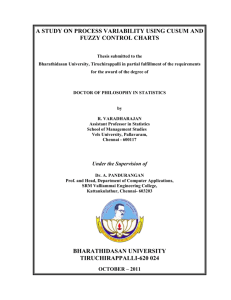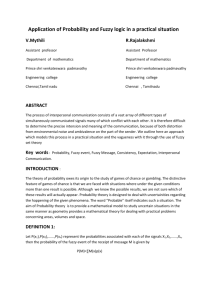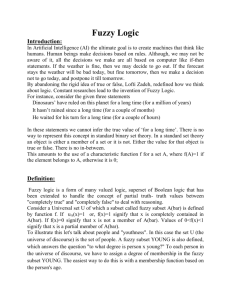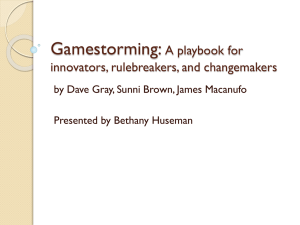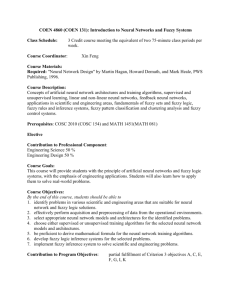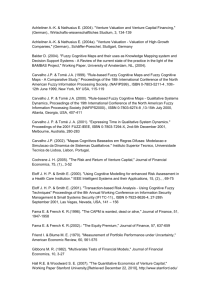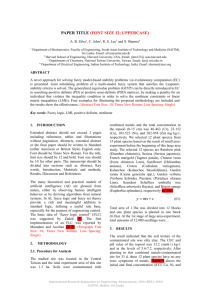PowerPoint Template
advertisement
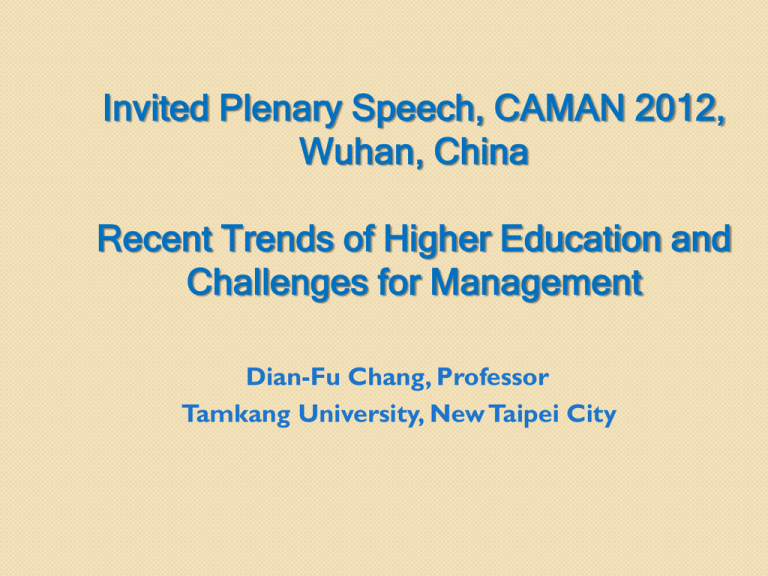
Invited Plenary Speech, CAMAN 2012, Wuhan, China Recent Trends of Higher Education and Challenges for Management Dian-Fu Chang, Professor Tamkang University, New Taipei City Contents 1 Trends of Higher Education 2 New Challenges in the 21st Century 3 4 5 Models of Higher Education Management Knowledge Production Examples of Related Studies 1. Trends of Higher Education Contemporary higher education has been influenced by two mega-trends— globalization and massification In the twenty-first century, globalization has had a substantial impact on all of higher education, and simultaneously, massification has influenced the globalized academic environment. According to UNESCO data, 165 million students participated in formal tertiary education worldwide in 2009; this is an increase of 65 million students since 2000 and a growth of 65% (UNESCO Institute for Statistics 2011). Globally, the increase in the number of foreign students can be contrasted to the rise in tertiary enrolment. Most countries currently view international academic mobility and educational exchange as critical components for sharing knowledge, building intellectual capital, and remaining competitive in a globalizing world. In the United States alone, higher education is the fifth largest service export sector, with in-bound international students contributing US$17.7 billion to the economy each year (Bhandari & Chow 2009). 2. New Challenges in the 21st Century Egalitarianism: Equality • Access to higher education • Standardization of curriculum/degree • Teaching-focused Globalization • Massification • Privatization • Governance & Accountability Elitism: Excellence Internationalization • Mobility of faculty and students • Rankings, world-class university • Quality of higher education • Knowledge production • Research-focused Source: Jung Cheol Shin & Grant Harman(2009). New challenges for higher education: global and Asia-Pacific perspectives. Asia Pacific Educ. Rev. 10:1-13. 2. 1 Challenges: Massification Tertiary enrollment 100.0 91.0 90.0 80.0 70.0 82.0 73.0 66.0 56.0 60.0 50.0 57.0 59.0 50.0 40.0 42.0 30.0 26.0 20.0 10.0 0.0 ratio (%) Australia Czech France Germany Japan Source: World Bank edstats data query, OECD Stat Extracts. Korea Mexico Poland UK USA 2.2 Challenges: Privatization Enrollment at Private Institution 100.0 90.0 79.9 80.0 80.1 70.0 60.0 50.0 40.0 32.7 30.8 25.5 30.0 16.6 20.0 10.0 0.0 10.7 2.2 ratio (%) Source: OECD Stat Extracts. 9.0 0.0 2.2 Challenges: Privatization Governmental Expenditure for Tertiary Education(%) 100.0 90.0 85.7 80.7 80.0 85.6 82.8 91.4 84.1 87.9 80.6 69.0 70.0 60.0 50.0 74.0 66.9 62.7 56.1 46.9 47.8 41.7 40.0 34.7 33.7 30.0 24.3 20.0 16.7 10.0 0.0 ratio (%) Australia Czech France Germany Japan year 1998 Source: OECD Stat Extracts. Korea Mexico year 2005 Poland UK USA 2.3 Challenges: Internationalization Proportion of International students (%) 2.4 Challenges: WCU & Global Ranking WCU by Language 100.0 90.0 80.0 70.0 60.0 50.0 40.0 30.0 20.0 10.0 0.0 ratio (%) Ranking 200 Univ. Ranking 300 Univ. English speaking Source: The Times ranking homepage. Non-English speaking Ranking 500 Univ. 3. Models of Higher Education Management Teaching and Research Systems French Model Education Resea -rch dual system German Model Education & Research integrated system American Model Research Education graduate & undergraduate 3.1 Locus of Higher Education Management State, University Managers and Professors State Univ. Manager Professor Continental Europe British America (Clark, 1983) 3.2 HE Systems: Quality Assurance & Funding Policy Management and University Relationships State QA Funding HEIs 3.3 Change of Budget Mechanism 700000 HE Budget 600000 500000 Total HE Budget Formula-base Evaluation-based 400000 300000 200000 100000 2004 2003 2002 2001 2000 1999 1998 1997 1996 1995 1994 1993 1992 1991 1990 1989 0 Year Notes: a) Unit: Million Korean Won. b) Total budget is based on the Education Budget (from 1989 to 2004) c) Formula-based budget is the total of conventional budget and the evaluation-based budget is the total of 11 funding projects that are designed to allocate budget based on institutional evaluation. d) Sources: Annual Education Budget (Korean Ministry of Education, 1989-2005) 4. Knowledge Production Worldwide Total Publication Source: US National Science Board, 2010 4.1 Knowledge Production: Share of Publication by Country (%) Source: US National Science Board, 2010 4.2 Knowledge Production: Growth Rate of Publication (from 1995) Source: US National Science Board, 2010 5. Examples of Study In the United Kingdom and the United States, research and teaching quality ratings have influenced government funding for individual higher education institutions (Patrick & Stanley, 1998). Meanwhile, the Ministry of Education in Taiwan has since 2005 promoted the “Teaching Excellence Project”, aimed at improving university teaching quality driven by a funding reward system. 5.1 Teaching Quality Assessment We used SEM (structural equation model) analysis to test university teaching quality assessment model. The five indicators, including resources, curriculum, teachers, counseling, and satisfaction with teaching, have a significant positive correlation with teaching quality .25 e23 e24 .44 Q23 e25 e26 .55 .61 Q25 Q24 .66 .78 e3 .52 Q26 e10 .36 Q3 .74 .72 e11 .55 Q10 e13 .41 Q11 e14 .39 Q13 .47 Q14 e19 .31 Q16 e20 .49 Q19 curriculum 1.00 e101 e102 .27 1.00 Q1 e1 .52 e103 .85 .92 quality_s .37 Q20 .74 .64 .63 .69 .56 .70 .61 .60 source .62 .79 e16 .74 Q2 .71 Q4 .63 .58 .68 teacher .55 e2 .51 e4 .40 Q5 e5 .33 Q7 e7 .96 .93 .47 Q15 e15 e104 e105 satisfaction .91 .87 councel .82 .78 .71 .69 Q30 Q29 .68 e30 Q28 .60 e29 Q27 .50 e28 .47 e27 .55 .63 .72 .69 .71 Q22 .31 e22 Q21 Q18 .40 e21 Q17 .52 e18 .47 e17 Standardized estimates Q9 .51 e9 .60 .54 Q8 Q6 .36 e8 .29 e6 Findings: 1. Teaching quality questioned after expansion in quantity of higher education; 2. The teaching quality at universities did not meet student expectations. 3. It needs assess university teaching quality regularly using the teaching quality assessment model. 5.2 Time Management for College Students Fuzzy means, Defuzzification, and Distance of fuzzy interval numbers + d(χ1, χ2)= Ci C j ln(1 Ai ) Ai ln(1 A j ) | Aj | Triangular fuzzy numbers 5.3 Fuzzy measure study abroad and… •We applied the fuzzy measurement to collect the college students’ perceptions of their campus life and their intention to stay at domestic campus or study abroad. •This study used the self-designed fuzzy questionnaire to collect the data from 289 college students in Taiwan. An example of the self-designed fuzzy questionnaire: The results revealed that fuzzy statistics can be applied to tackle ambiguity questions in different fields. The fuzzy correlation provides more detail information to interpret what students have done and what they intent to do. Study abroad by gender difference Idea of fuzzy correlation Testing of Fuzzy correlation 5.4 Fuzzy evaluating management performance and marketing strategies Fuzzy evaluating management performance TQM in Higher Education The challenges: ◦ Customer driven ◦ Data-intensive ◦ Result-oriented Thanks Dian-Fu Chang



